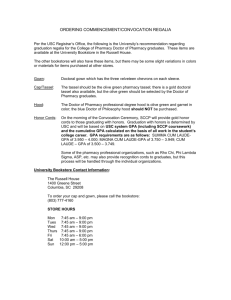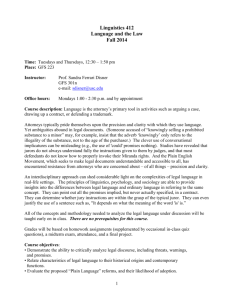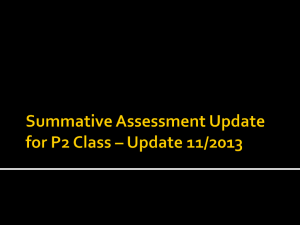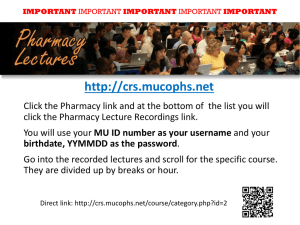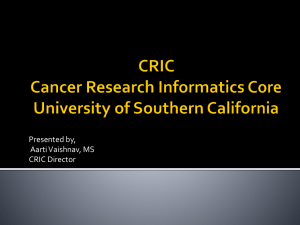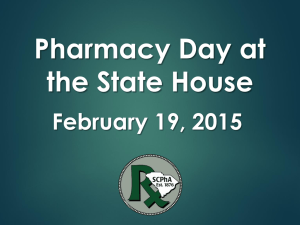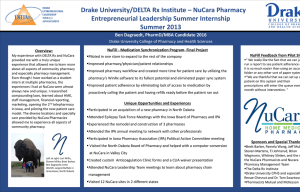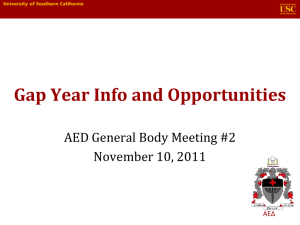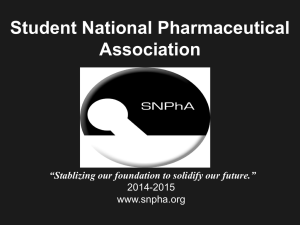Pharmacy Orientation.. - University of Southern California
advertisement
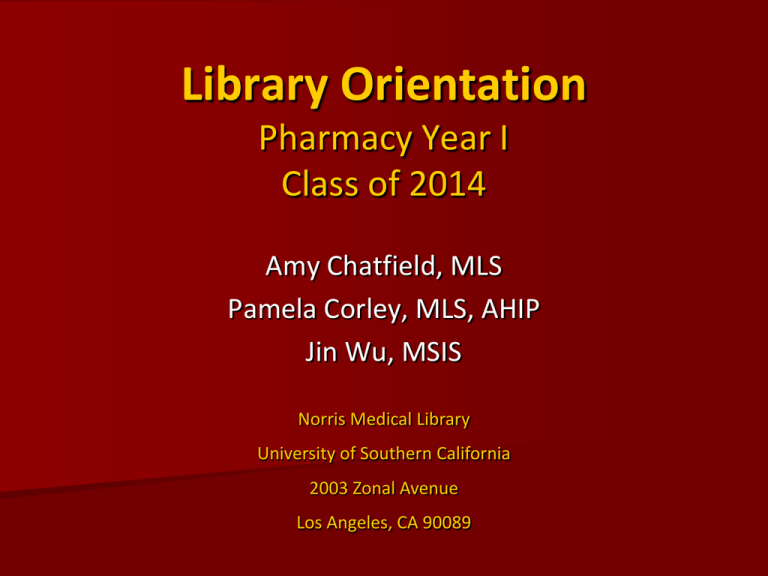
Library Orientation Pharmacy Year I Class of 2014 Amy Chatfield, MLS Pamela Corley, MLS, AHIP Jin Wu, MSIS Norris Medical Library University of Southern California 2003 Zonal Avenue Los Angeles, CA 90089 Learning Objectives To: • Learn about audience response system/ “clickers” • Learn about major tools in Blackboard • Use AccessPharmacy to locate specific types of information • Understand where to locate additional information resources to support Year 1 classes • Recognize common types of plagiarism Audience Response System, or Clickers • Required in Pharmacy classes • Used to take in-class, graded quizzes and/or attendance • Review the IMS-provided handout in orientation packet Audience Response System, or Clickers • YOUR OWN CLICKER is required in Pharmacy classes •Don’t take them apart- need to return to School upon graduation • IMS: help with clicker problems Blackboard •Course Management Software (CMS): name for a type of software •Blackboard : CMS for USC School of Pharmacy •One Blackboard site per class •Faculty post: •Documents (ASSIGNMENTS, syllabi), tests, announcements • Students: •Download and return assignments •Participate in discussion boards •Group work in classes •Take tests •Register clickers http://www.usc.edu/schools/pharmacy/ http://www.usc.edu/nml The student portal provides access to information resources that… • are authoritative • are accurate • are current • use citations to research or other scholastic efforts • Information literacy is a key competency for pharmacists •Finding information •Determining if it is reliable information •Interpreting information • As you are gaining experience with these skills, why not use these selected resources as a starting point? Plagiarism Defined Plagiarism is: “the unauthorized use or close imitation of the language and thoughts of another author and the representation of them as one's own original work” Random House Dictionary 2009 Direct Quotes v. Paraphrasing Direct quotes Used to indicate language (i.e. wording) is same Good when point is particularly well-stated Rarely used in science Author last name, date, and page Paraphrasing Used to indicate source of ideas Language is not the same Common in scientific articles Author last name, date, and sometimes page Tricky Plagiarism Situations Raltegravir has promise as a combination therapy for treatment-experienced HIV-1 infected patients who show evidence of viral replication. Answer: This is a combination paraphrase and a direct quote. Put quotation marks around the phrase “treatment-experienced…replication” and cite the entire sentence. The sentence overall is a paraphrase: a restatement of the authors’ idea. Common phrases do not need to be enclosed in quotation marks: HIV-1 infected patients is the most succinct way to describe this group. If only using HIV-1 infected patients phrase: simply a paraphrase. Cite the whole sentence , with no quotation marks. The example used additional words directly from the article (HIV-1 infected patients who show evidence of viral replication) so those need to be enclosed in quotation marks. The entire sentence is still a paraphase, and the whole sentence needs to be cited. Conclusion Contact Norris Library for help: • medlib@usc.edu • Reference Desk, M-F, 9 AM-5 PM, in person and by phone: (323) 442-1111 • Chat (Meebo widget on webpages) • Set up a “house call” for one-on-one help Contact Amy Chatfield, your librarian: amychatf@usc.edu Evaluations: Amy, Pam, or Jin Pharmacy student orientation


